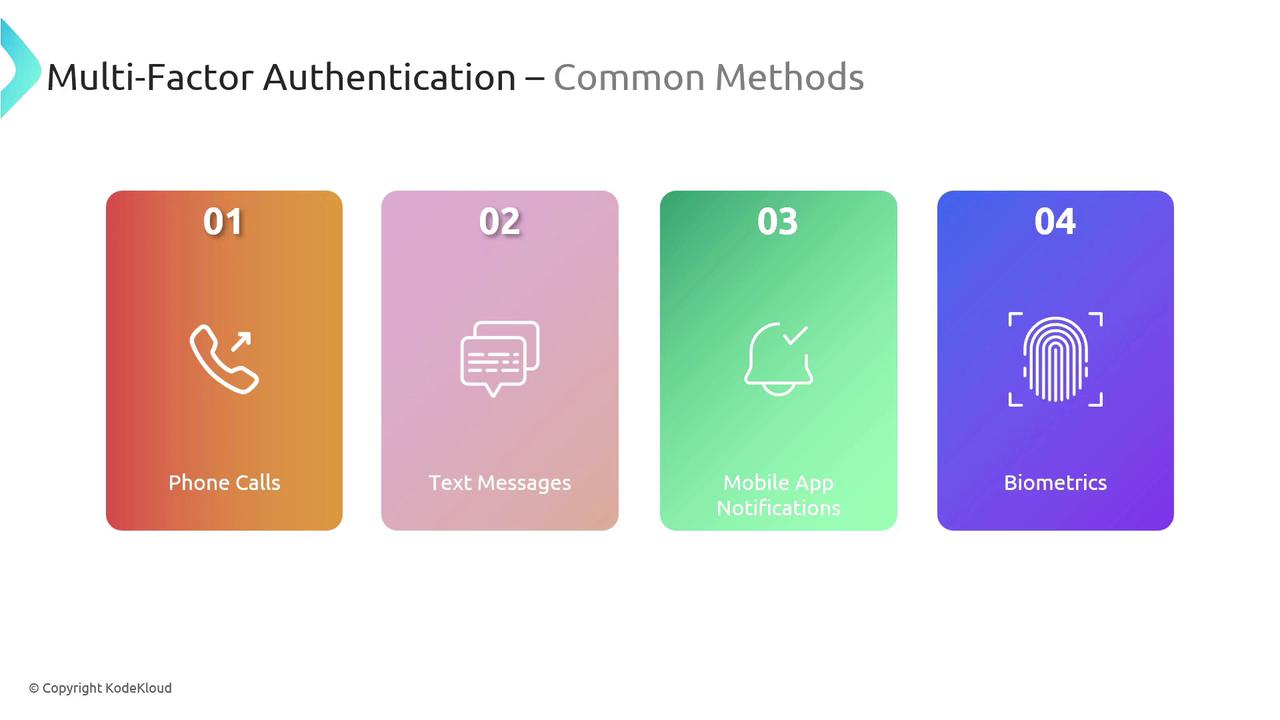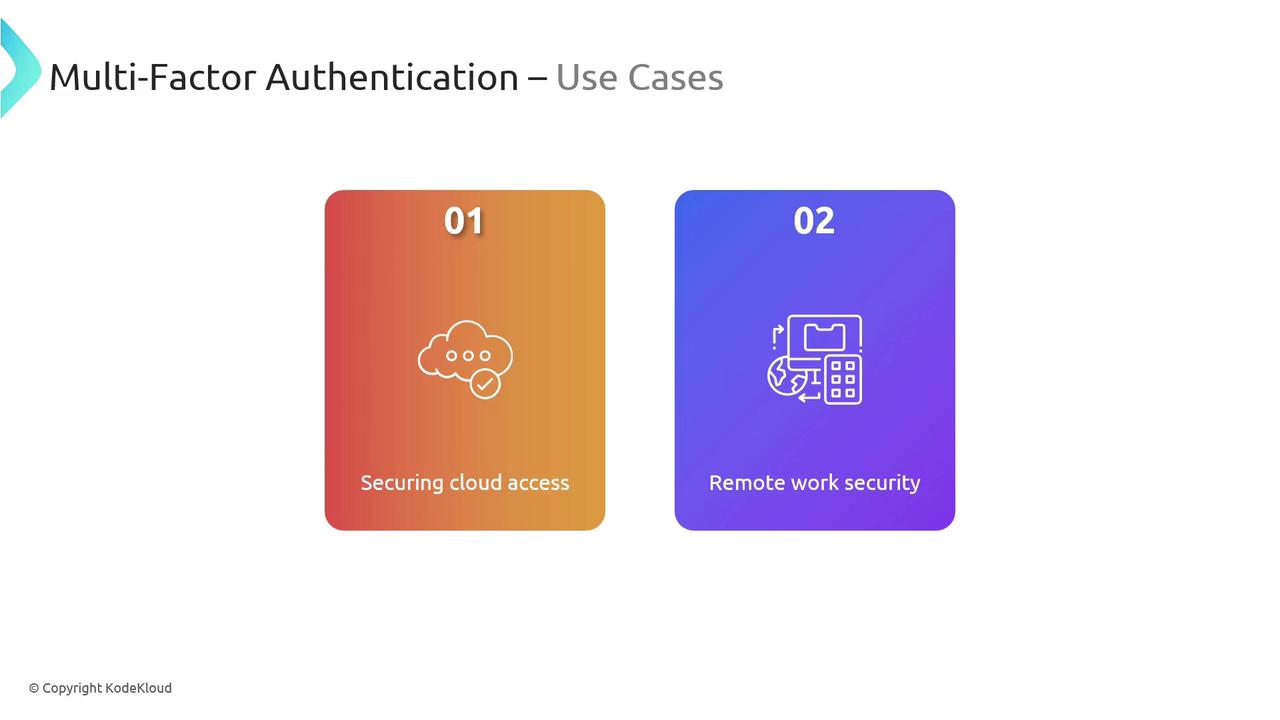AZ900: Microsoft Azure Fundamentals
Identity Access and Security
Multi Factor Authentication
In this article, we explore a critical cybersecurity component in Azure—Multi-Factor Authentication (MFA). MFA adds an additional verification step to secure your online accounts, making it much more challenging for cyber attackers to gain access using only a compromised password.
Imagine your online accounts as a highly secure vault. Relying on a single key (your password) is often not enough if that key becomes exposed. MFA acts as an extra lock, requiring not just something you know (e.g., your password), but also something you have (such as a mobile device) or something you are (like a fingerprint).
![]()
MFA leverages multiple independent factors for authentication. When integrated within Microsoft Entra ID, it substantially improves the protection for user sign-ins and transactions by ensuring that a single compromised credential does not grant full account access.
Benefits of MFA
Enhanced Security
MFA reduces the risk of unauthorized access by requiring additional layers of verification. Even if one credential is compromised, the intruder cannot easily bypass the subsequent checks.Flexibility and Usability
Users benefit from various authentication methods including text messages, phone calls, mobile app notifications, and biometric scans. This flexibility allows for a seamless and personalized security experience.Regulatory Compliance
Implementing MFA helps organizations meet stringent regulatory requirements, ensuring that sensitive data is protected in accordance with industry standards.

Common MFA Methods and Their Use Cases
MFA employs several verification methods to secure access to sensitive data and cloud applications. Some common methods include:
- Phone calls
- Text messages
- Mobile app notifications
- Biometric authentication (fingerprints or facial recognition)
These methods are essential for keeping corporate data secure, especially in remote work environments where unauthorized access can pose significant risks.
Tip
Selecting the right combination of MFA methods is key to balancing security and user convenience in your organization.


Integrating MFA with Conditional Access
MFA is most effective when combined with Conditional Access. Conditional Access policies allow you to enforce dynamic, "if-then" security rules to protect sensitive resources. For example, if a user attempts to access corporate data under unfamiliar conditions, additional authentication may be required.
Implementation Insight
Leveraging Conditional Access with MFA enhances your security posture by ensuring that additional verification steps are triggered only under specific, predefined circumstances.
A deeper discussion on implementing Conditional Access policies, along with best practices, will be covered in subsequent articles. This proactive approach ensures that your organization's security posture remains robust and adaptive to evolving threats.
By adopting MFA and integrating it with Conditional Access, organizations can significantly mitigate the risk of breaches while ensuring compliance and user flexibility.
For more details on securing your Azure environment, refer to the official Microsoft Azure Documentation.
Watch Video
Watch video content